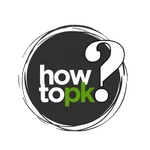Living in Pakistan, we’re all familiar with unexpected power outages. These load-shedding spells, especially during hot summers, can turn food storage into a real challenge. Our trusty refrigerators become mere boxes, and the worry about food spoilage quickly sets in. But don’t fret! Our ancestors in this region had ingenious ways to keep food fresh long before electricity was even a concept.
This guide will walk you through practical, step-by-step methods, both traditional and modern, to ensure your family’s food remains safe and edible even when the lights go out.
The goal is to prevent the growth of harmful bacteria, which thrive in warm, moist environments. By understanding the principles behind different preservation techniques, you can make informed choices and keep your food fresh without a refrigerator during power cuts.
Understanding Food Spoilage and Safety During Power Cuts
What Happens to Food Without Refrigeration?
When the electricity goes out, your refrigerator slowly starts to warm up. This rise in temperature creates an ideal breeding ground for bacteria like Salmonella, E. coli, and Listeria. These bacteria can multiply rapidly, especially on perishable items like meat, poultry, dairy, and cooked leftovers, leading to food poisoning if consumed.
It’s crucial to understand that food might look, smell, and even taste normal, but still be teeming with dangerous bacteria. Don’t rely on your senses alone to determine if food is safe.
How Long Does Food Stay Safe in a Refrigerator During a Power Outage?
A closed refrigerator can keep food safe for about 4 hours. A full freezer, on the other hand, can maintain its temperature for approximately 48 hours (24 hours if half-full). The key is to keep the doors closed as much as possible to trap the cold air inside. Every time you open the door, warm air rushes in, significantly reducing the safe storage time.
When to Discard Food
After 4 hours without power, any perishable food in your refrigerator, such as raw meat, poultry, fish, eggs, milk, cream, soft cheeses, cooked leftovers, and deli meats, should be discarded. For your freezer, if the food still contains ice crystals and feels cold to the touch, it’s generally safe to refreeze or cook. If there are no ice crystals and the food feels warm, it’s best to throw it out to avoid any health risks. When in doubt, always err on the side of caution and discard the food.
Preparing for Power Cuts: Before the Lights Go Out
Organize Your Refrigerator and Freezer
Before an anticipated power cut or even as a regular habit, ensure your refrigerator and freezer aren’t overly packed but also not too empty. Consider freezing water bottles or gel packs to fill empty spaces in your freezer. These will help maintain a colder temperature for longer during an outage.
Have a Cooler and Ice Ready
Purchase a reliable cooler. Freeze water in plastic bottles or reusable ice packs. These can also be used in your freezer to help keep it full. If you don’t have ice packs, filling empty plastic bottles with water and freezing them works just as well. You can even use bags of ice from the market if needed.
Stock Non-Perishable Food Items
Stock up on items like canned goods (beans, chickpeas, vegetables, fruit, tuna, chicken), dried fruits, nuts, grains (rice, lentils, pasta), biscuits, and ready-to-eat meals. Rotate your stock regularly to ensure freshness.
Traditional and Modern Techniques to Keep Food Fresh Without a Refrigerator
1. Salting and Curing (Namkeen Gosht / Achar)
- For Meat (e.g., Namkeen Gosht): Cut meat into smaller pieces. Rub a generous amount of coarse salt thoroughly over all surfaces. You can also add turmeric for its antiseptic properties. Place the salted meat in a clean, dry container or hang it in a cool, airy, and shaded place, protecting it from flies and dust with a muslin cloth. The meat will dry out over several days, forming a protective crust. For longer preservation, some also boil the salted meat lightly before drying.
- For Vegetables (e.g., Achar/Pickles): Wash and thoroughly dry vegetables like mangoes, carrots, lemons, or chilies. Cut them into desired pieces. Mix them with a generous amount of salt and various spices (like red chili powder, turmeric, fenugreek seeds, fennel seeds, kalonji, mustard seeds) and often, mustard oil or vinegar. The oil or vinegar creates an acidic or anaerobic (oxygen-free) environment, preventing spoilage. Store1 in clean, sterilized glass jars in a cool, dark place.
Tips: Ensure the food is completely dry before salting. For meat, protect it from insects and animals. For pickles, ensure the oil or brine completely covers the vegetables to prevent mold growth.
2. Drying and Dehydration (Khushk Sabzi / Gosht)
- Sun Drying: Wash and thinly slice vegetables (e.g., potatoes, onions, tomatoes, gourds, leafy greens like saag), fruits (e.g., apricots, dates), or meat. Spread them in a single layer on clean sheets, trays, or charpoys, preferably elevated from the ground to allow air circulation. Cover with a fine mesh or muslin cloth to protect from insects and dust. Bring them indoors at night to prevent dew. This process can take several days to a week, depending on the food and weather. The food should be brittle or leathery when completely dry.
- Air Drying: For herbs or some fruits, you can tie small bunches and hang them in a well-ventilated, dry area away from direct sunlight.
Tips: Ensure the weather is consistently sunny and dry for sun drying. If moisture remains, the food can mold. Store dried food in airtight containers in a cool, dark place.
3. Pickling and Fermentation (Achar / Dahi)
- Pickling with Vinegar: As mentioned under salting, vinegar is a key component. Prepare a brine with vinegar, water, salt, and spices. Boil the brine, let it cool slightly, then pour it over prepared vegetables or fruits in sterilized jars. Ensure the food is fully submerged.
- Fermentation (e.g., Dahi/Yogurt): While yogurt needs refrigeration after it’s set, the initial fermentation process itself is a preservation method for milk. To make yogurt without constant refrigeration, you can set it in a warm place. Once set, consume it within a day or two, especially in hot weather, as it will continue to ferment and turn sour quickly. For longer preservation of milk, consider making paneer (cottage cheese) from it, which can last a few days if kept in fresh water and changed regularly.
Tips: Sterilize jars properly to prevent contamination. Use good quality vinegar. For fermented products, ensure proper hygiene to avoid unwanted mold.
4. Oil Submersion
Cook the food thoroughly. Pack it tightly into clean, dry jars. Pour oil (like mustard oil, olive oil, or any cooking oil) over the food, ensuring it’s completely submerged with at least an inch of oil above the top layer. Seal the jar tightly. Store in a cool, dark place. This is often used for preserving garlic, chilies, or even leftover curries for a short period.
Tips: Always cook the food first if it’s not naturally acidic. Ensure no air bubbles are trapped in the jar. This method is generally for short-term preservation (a few days to a week) unless combined with other methods like pickling.
5. Evaporative Cooling (Zeer Pot / Clay Pot Refrigerator)
Obtain two unglazed clay pots, one smaller than the other. Place the smaller pot inside the larger one. Fill the space between the two pots with sand. Pour water over the sand, keeping it consistently damp. Place your fruits, vegetables, or even milk (in a sealed container) inside the smaller pot and cover it with a damp cloth or lid. As the water in the sand evaporates, it cools the inner pot, keeping contents fresh for several days.
Tips: Use unglazed clay pots for best results. Place the setup in a well-ventilated, shady area. Replenish the water daily to keep the sand damp. This method works best in low-humidity environments.
6. Root Cellaring / Cool, Dark Storage
Identify the coolest, darkest, and relatively humid spot in your home. This could be a pantry, a corner of a basement, or even under a charpoy in a quiet room that doesn’t get direct sunlight. Store items like potatoes, onions, garlic, carrots, and sweet potatoes in breathable sacks (jute bags or net bags) or open crates. Keep them separate from fruits that produce ethylene gas (like apples), as this can accelerate ripening and spoilage of vegetables.
Tips: Ensure good air circulation around the stored items. Check regularly for any signs of spoilage and remove affected items immediately to prevent spread. Potatoes should be kept in the dark to prevent greening (which indicates solanine, a toxic compound).
7. Canning and Bottling (Airtight Sealing)
This is a more involved process requiring specific equipment. You’ll need glass canning jars with two-piece lids (flat lid and screw band), a large stockpot or pressure canner, and a jar lifter.
- Water Bath Canning (for high-acid foods like fruits, pickles, jams): Prepare your food and fill sterilized jars, leaving appropriate headspace. Place lids and screw bands. Submerge jars in boiling water in a large pot, ensuring they are covered by at least an inch of water. Boil for the recommended time. Remove and let cool, checking for a proper seal (lid should be concave).
- Pressure Canning (for low-acid foods like vegetables, meats, beans): This requires a pressure canner to reach higher temperatures needed to kill bacteria like Clostridium botulinum. Follow specific instructions for your pressure canner and the type of food you are processing.
Tips: Always follow tested recipes and guidelines for canning to ensure food safety, especially for low-acid foods. Improper canning can lead to serious food poisoning. While2 initially an investment, canning supplies can be reused for years.
8. Using Oil and Vinegar for Short-Term Preservation
After cooking, let the food cool completely. For curries, add a thin layer of oil on top before covering. For daal or certain vegetable dishes, a small amount of vinegar can be stirred in. This is a short-term solution and the food should still be consumed within 12-24 hours, especially in hot weather.
Tips: Always reheat food thoroughly before consuming, bringing it to a rolling boil to kill any lingering bacteria.
9. Frequent Reheating (especially for Daal and Curries)
Every 6-8 hours, or whenever you plan to consume the food, bring it to a vigorous boil for at least 5-10 minutes. Ensure it boils thoroughly. Let it cool slightly before consuming. Do not let it stand at lukewarm temperatures for long periods.
Tips: This method is effective for short-term preservation of cooked food but eventually, the food will spoil. It’s best used for food intended to be consumed within 24-48 hours. Ensure the food is fully cooled before reheating again to prevent partial cooking.
10. Using Ice Boxes or Insulated Containers
If you anticipate or are in the midst of a prolonged power cut, transfer highly perishable items like milk, meat, and cooked food from your refrigerator to an ice box. Pack them tightly with ice or frozen water bottles. Drain melted ice water periodically and replenish with fresh ice.
Tips: Place a towel or newspaper at the bottom of the cooler before adding ice to absorb excess moisture. Keep the lid closed tightly. Place the cooler in the coolest spot in your home, away from direct sunlight.
Specific Food Category Advice During Power Cuts
Meat and Poultry
These are highly perishable. If a power cut is imminent or prolonged:
- Cook them immediately if possible, then follow the frequent reheating method or dry them if conditions allow.
- Salt and air-drying are traditional methods for meat, particularly during Eid-ul-Azha.
- If you have access to a nearby market with ice, an ice box can keep meat safe for a day or two.
Dairy Products (Milk, Yogurt)
- Milk: Fresh milk will spoil quickly. Boil it repeatedly (every few hours) to extend its life by a day. For longer storage, consider making yogurt (dahi) or paneer from it. Once yogurt is set, it will sour quickly without refrigeration; consume it within a day.
- Butter/Ghee: Ghee (clarified butter) is shelf-stable and does not require refrigeration. Butter can be stored in a sealed container in a very cool, dark place for a few days, especially if it’s homemade and contains some salt.
Fruits and Vegetables
- Uncut Fruits & Vegetables: Store items like potatoes, onions, garlic, carrots, citrus fruits, apples, and bananas in a cool, dark, well-ventilated spot (like a pantry or a “zeer pot”). Keep them separate from each other where possible.
- Leafy Greens: Wash, dry thoroughly, and wrap in a damp cloth, then place in a basket or clay pot in the coolest available spot. Consume within a day or two.
- Cut Fruits & Vegetables: These spoil very quickly. Consume immediately or use evaporative cooling methods for a very short extension.
- Tomatoes: Store at room temperature, away from direct sunlight. They tend to ripen quickly, so consume or preserve (e.g., make a thick chutney or puree and then salt/oil preserve) them within a few days.
Cooked Food and Leftovers
- Consume cooked food as soon as possible.
- Reheat thoroughly to a rolling boil every few hours.
- Avoid storing cooked food for more than 24-48 hours without refrigeration, even with frequent reheating, especially during hot weather.
Anticipating and Overcoming Challenges
Common Mistake: Opening Refrigerator/Freezer Too Often
Advice: Resist the urge! Plan what you need before opening the door and grab everything at once. Keep a thermometer inside your fridge/freezer to monitor temperatures without opening the door.
Challenge: Lack of Space for Alternative Storage
Advice: Prioritize highly perishable items for cooler/ice box storage. For other items, utilize cool, dark corners, under beds, or any shaded area in your home. Remember, even a slight temperature drop helps.
Question: What about Eggs?
Advice: Unwashed, fresh eggs can last for a week or two at room temperature in a cool, dark place. However, commercially washed eggs (common in supermarkets) should ideally be refrigerated. If power is out, consume them within a few days and ensure they are cooked thoroughly (e.g., hard-boiled or scrambled until firm).
Challenge: Contamination from Pests
Advice: When using methods like sun-drying or cool storage, always protect food from flies, rodents, and other pests. Use fine mesh covers, muslin cloths, or store in sealed, pest-proof containers.
Tip for Hydration: Safe Drinking Water
While not directly about food, access to safe drinking water is critical during power cuts. Keep a supply of boiled or filtered water on hand, or have water purification tablets or a portable filter system as backup. Staying hydrated is essential for overall health, especially during hot weather.
Conclusion: Empowering Yourself for Uninterrupted Freshness
Navigating food preservation during power cuts in Pakistan might seem daunting, but by understanding and implementing these traditional and modern techniques, you can ensure your family has access to safe and fresh food. From salting and drying to the ingenious zeer pot, these methods offer practical solutions that are deeply rooted in our local heritage and adapted for modern challenges.
The key is preparation and knowledge. By having a plan, stocking essential non-perishable items, and knowing how to utilize these simple yet effective preservation methods, you can face any power outage with confidence, knowing your food supply is secure. Embrace these techniques, and you’ll find a new appreciation for resilient living and sustainable practices right in your own home.
Resources
- Unglazed clay pots (often available at local pottery shops or larger markets)
- Coarse salt
- Vinegar (white or apple cider)
- Muslin cloth or fine mesh netting
- Airtight containers (glass jars, plastic containers with good seals)
- Insulated cooler or ice box
- Ice or reusable ice packs
- Food thermometers (for monitoring fridge/freezer temperature)
- Basic canning equipment (for advanced users)







